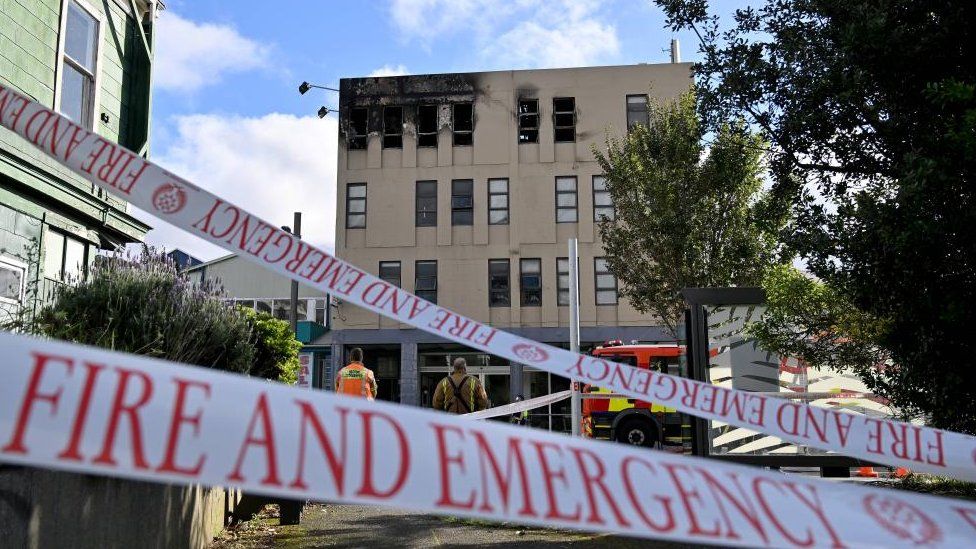
New Zealand police have charged a 48-year-old man with five counts of murder in relation to a deadly hostel fire.
He had already been detained and charged with arson over the blaze in Wellington last month.
Loafers Lodge, a four-storey emergency housing hostel in the capital, burned down on 16 May killing five people.
The incident has renewed debate about New Zealand’s housing crisis as the site had been home to members of vulnerable and marginalised groups.
Located just a block away from Wellington city hospital, many hospital workers had also relied on it for short-term accommodation.
Wellington Police told reporters on Thursday they had informed victims’ families of the prosecution’s charges.
The fatal blaze occurred on 16 May, shortly after midnight local time. Police soon after launched a homicide inquiry, and said they were treating the blaze as an act of arson.
The victims are still yet to be publicly identified, but they were all men aged between 50 and 67, local media reported.
At least 99 residents had been living in the building on the night of the fire.
When it broke out, some were forced to crawl through smoke to safety. Others huddled on the roof while waiting to be rescued.
One lodger, Tala Sili, said he had jumped from his window to escape the flames.
“I was on the top floor, and I couldn’t go through the hallway because there was just too much smoke so I jumped out the window,” he had earlier told national broadcaster RNZ.
“It smelt like poison,” he said.
Amid conflicting accounts from residents, Wellington’s fire authorities last month said they could not confirm whether smoke alarms had gone off in the building.
Many people in New Zealand have been cut out of the housing market due to sky-high property prices, rising rents and a shortage of government-subsidised homes.
Use of emergency housing also skyrocketed in the country during the pandemic. Government data shows the stopgap solution has become a long-term option for many.


